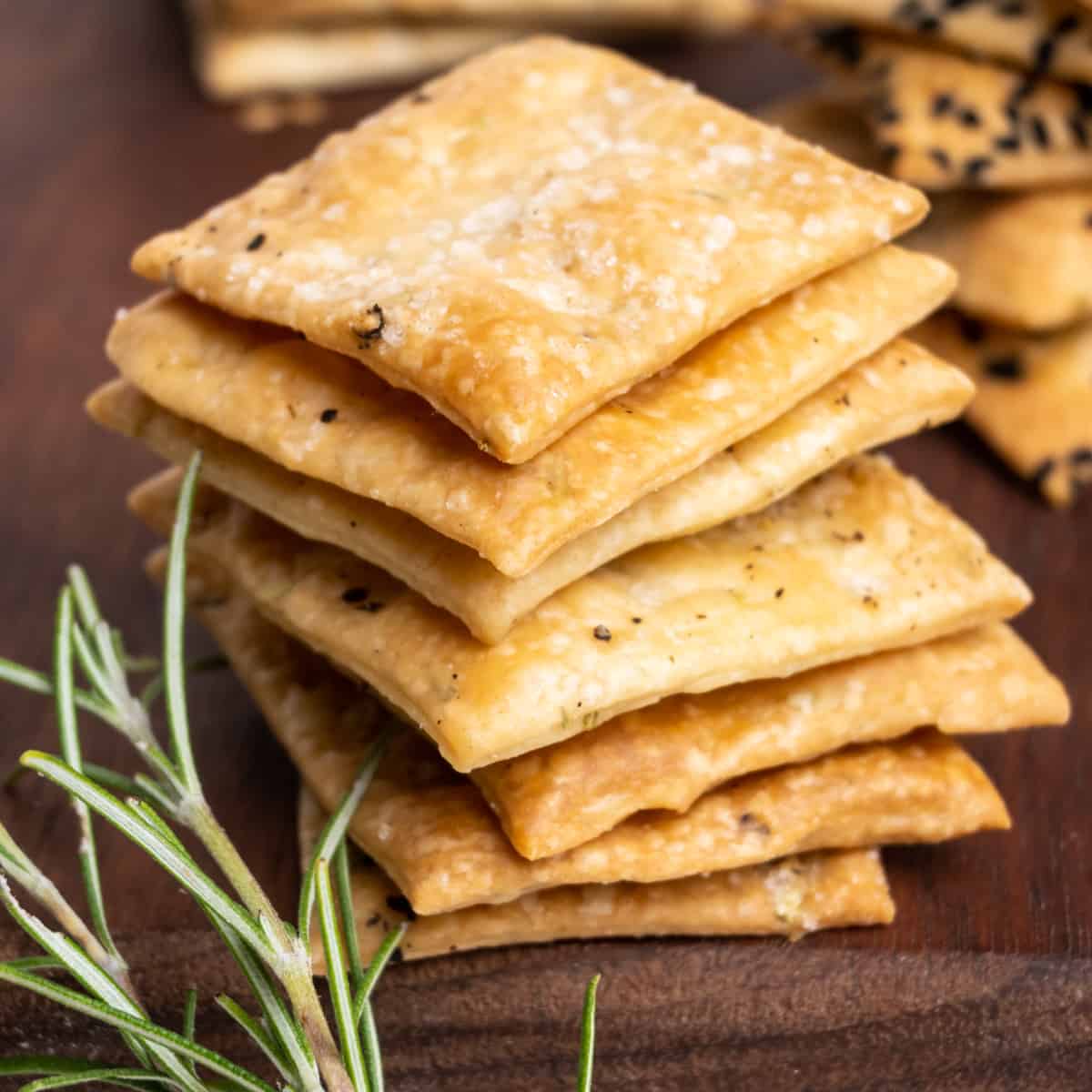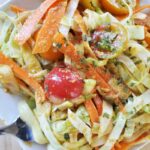Imagine crisp, flavorful crackers crafted entirely from wholesome, raw ingredients, bursting with vibrant textures and unique flavor combinations. This isn’t a distant dream; it’s a delicious reality you can create in your own kitchen. Learn to make easy raw vegan crackers, exploring three distinct recipes, each showcasing a unique blend of nuts, seeds, and vegetables. Discover the secrets to achieving the perfect texture, from adjusting dehydration time to mastering ingredient ratios. Prepare to embark on a culinary journey that’s both rewarding and unbelievably tasty.
We’ll guide you through a step-by-step process, providing troubleshooting tips to overcome common challenges. Explore exciting flavor variations, from savory herbs to sweet spices, and learn how to adapt the recipes to suit your dietary needs and preferences. With a little guidance, you’ll master the art of creating these healthy, delicious crackers, perfect for snacking, entertaining, or incorporating into your favorite meals.
Step-by-Step Instructions
Creating these easy raw vegan crackers is a straightforward process, rewarding you with a crunchy, flavorful snack perfect for any occasion. This recipe utilizes readily available ingredients and minimal equipment, making it accessible to even novice cooks. The key to success lies in precise measurements and understanding the role of each ingredient in achieving the desired texture.
This recipe focuses on a simple sunflower seed and flaxseed cracker. The combination provides a nutty flavor and a satisfying crunch. The recipe yields approximately 20 crackers, depending on the thickness.
Ingredients and Measurements
Accurate measurement is paramount in creating crackers with the right consistency. Using a kitchen scale for weighing ingredients ensures greater precision than relying solely on volume measurements, particularly with ingredients like seeds.
- 1 cup (113g) sunflower seeds
- ½ cup (57g) flax seeds
- ½ cup (120ml) water
- 1 teaspoon sea salt
- 1 tablespoon nutritional yeast (optional, for cheesy flavor)
Preparation and Mixing
The initial steps involve combining the dry ingredients and gradually adding water to form a cohesive dough. Over-mixing should be avoided to prevent a tough cracker texture.
- Combine sunflower seeds, flax seeds, salt, and nutritional yeast (if using) in a food processor.
- Process until the seeds are finely ground but not completely into a powder; you want some texture remaining.
- With the food processor running, slowly add water until a thick, sticky dough forms. This may take slightly more or less than ½ cup depending on the moisture content of your seeds.
- Scrape down the sides of the food processor as needed to ensure even mixing.
Shaping and Dehydrating
Evenly distributing the dough and achieving the correct thickness are crucial steps to ensure uniform baking and prevent cracking or sticking. The dehydrating time will depend on the thickness of your crackers and your dehydrator’s settings.
- Line a dehydrator tray with parchment paper. This prevents sticking.
- Spread the dough evenly onto the prepared tray, aiming for a thickness of about ⅛ inch (3mm). A rolling pin can help achieve a consistent thickness.
- Use a knife or pizza cutter to cut the dough into desired shapes and sizes. Smaller crackers will dehydrate faster.
- Dehydrate at 115°F (46°C) for 6-12 hours, or until completely dry and crisp. Check for dryness after 6 hours; thinner crackers may require less time.
Troubleshooting Common Issues
Understanding potential problems and their solutions can save time and prevent frustration. Addressing these issues proactively ensures the creation of perfect crackers.
- Cracking: This often occurs if the dough is too dry or the crackers are too thick. Add a tiny bit more water to the dough if it’s too dry. For thick crackers, consider rolling them thinner next time.
- Sticking: Using parchment paper on the dehydrator tray usually prevents sticking. If sticking still occurs, lightly oil the parchment paper with coconut oil.
- Uneven Baking: Ensure even distribution of the dough on the tray. Thicker areas will take longer to dehydrate than thinner ones. You might need to rotate the tray halfway through the dehydrating process.
Ingredient Substitutions and Adaptations
Creating delicious and healthy raw vegan crackers opens up a world of culinary customization. The basic recipe provides a fantastic foundation, but understanding ingredient substitutions allows you to tailor the crackers to your specific dietary needs and preferences, experimenting with flavors and textures along the way. This section explores various substitutions for key ingredients, highlighting their impact on the final product.
Nut and Seed Alternatives
Many raw vegan cracker recipes rely on nuts and seeds for their binding properties and rich flavor. However, nut allergies are common, requiring suitable replacements. Sunflower seeds, pumpkin seeds, and even finely ground flaxseeds can effectively substitute for nuts like almonds or cashews. The substitution’s impact on the final product varies depending on the chosen alternative. For example, sunflower seeds will create a slightly sunnier flavor profile and a slightly crispier cracker, while pumpkin seeds will add a subtle sweetness and a more robust texture. Flaxseeds, due to their high oil content, might create a softer cracker that browns more quickly during dehydrating.
- Almonds replaced with Sunflower Seeds: Results in a crispier cracker with a slightly more intense, nutty flavor. Nutritional value shifts, providing more Vitamin E and selenium but potentially less protein and healthy fats.
- Cashews replaced with Pumpkin Seeds: Creates a denser cracker with a subtly sweet flavor. Nutritional profile changes, offering a higher concentration of zinc and magnesium, with a slightly lower fat content.
- Nuts replaced with Flaxseeds: Yields a softer, more delicate cracker that browns readily. Nutritional value shifts toward higher fiber and omega-3 fatty acids, with a lower overall fat content compared to nuts.
Sweetener Alternatives
The sweetness in many raw vegan cracker recipes often comes from dates. While dates provide a natural sweetness and binding properties, individuals seeking to reduce sugar intake or avoid specific ingredients might explore alternatives. Medjool dates, known for their intense sweetness, can be partially replaced or substituted entirely with other fruits such as figs or apricots, creating unique flavor profiles. Maple syrup or agave nectar can also be used but in more limited quantities to avoid excessive stickiness and altered texture.
- Dates replaced with Medjool Dates: Intensifies the sweetness, resulting in a more decadent cracker. Nutritional value increases slightly in potassium and fiber.
- Dates replaced with Figs: Creates a slightly more complex flavor profile with hints of earthiness. The texture might be slightly denser. Nutritional value shifts to a higher concentration of calcium and fiber.
- Dates replaced with Apricots: Offers a more tart and fruity sweetness. The texture remains relatively similar, with a slightly softer final product. Nutritional value provides a higher concentration of vitamin A and fiber.
- Dates partially replaced with Maple Syrup: Adds a subtle maple flavor, potentially increasing the stickiness of the dough. Nutritional value is altered, introducing more zinc and manganese.
Flavor Combinations and Enhancements

Elevating your easy raw vegan crackers from simple to sensational is all about exploring diverse flavor profiles. The base recipe provides a neutral canvas, perfectly receptive to a wide array of additions, allowing you to tailor the crackers to your specific tastes and preferences. The following sections detail three unique flavor combinations, each offering a distinct sensory experience.
Savory Herb Crackers
These crackers burst with the vibrant, earthy notes of fresh herbs, creating a sophisticated and satisfying savory snack. The aroma alone is enough to awaken the appetite. Imagine the fragrant steam rising from a freshly baked batch, carrying the scent of rosemary, thyme, and oregano. To achieve this, finely chop a generous tablespoon of a mixture of fresh herbs – rosemary, thyme, and oregano work particularly well together. Gently fold these herbs into the cracker dough before spreading it thinly onto your dehydrator sheets. The finished crackers will have a subtly peppery flavor from the rosemary, a slightly lemony undertone from the thyme, and the warm, slightly bitter notes of oregano. The overall flavor profile is complex yet balanced, offering a sophisticated alternative to standard salty snacks. A light dusting of sea salt after dehydrating enhances the savory notes further.
Sweet Spice Crackers
For a warm and comforting treat, sweet spice crackers offer a delightful alternative. The subtle sweetness combined with warming spices creates a cracker that’s both satisfying and inviting. Picture the deep reddish-brown hue of the crackers, speckled with the darker flecks of cinnamon and ginger. The aroma is reminiscent of a cozy autumn evening, filled with the comforting scents of cinnamon, nutmeg, and a touch of cardamom. To achieve this flavor profile, add 1 teaspoon of ground cinnamon, ½ teaspoon of ground nutmeg, and ¼ teaspoon of ground cardamom to the cracker dough. A touch of maple syrup (1 tablespoon) adds a gentle sweetness that complements the spices beautifully. The resulting crackers have a delicate sweetness balanced by the warm, aromatic spices, creating a flavor profile that is both comforting and sophisticated.
Tangy Citrus Crackers
These crackers offer a refreshing and zesty twist, perfectly balancing the subtle earthiness of the base recipe. The vibrant color of the crackers, subtly brightened by the citrus zest, is visually appealing. The aroma is uplifting and bright, hinting at the zesty burst of flavor to come. The addition of citrus zest, specifically lemon and orange, is key to this variation. Finely grate the zest of one lemon and half an orange and incorporate it into the cracker dough. A squeeze of fresh lemon juice (about 1 tablespoon) adds extra tanginess and helps to bind the dough. The finished crackers boast a vibrant citrus aroma and a bright, tangy flavor that cuts through any richness. The lemon provides a sharp, acidic bite, while the orange adds a subtle sweetness and a more rounded flavor. These crackers are a delightful accompaniment to dips or enjoyed on their own as a refreshing snack.
Creating your own raw vegan crackers opens a world of culinary possibilities. From the satisfying crunch to the endless flavor combinations, this simple process allows you to enjoy healthy, delicious snacks tailored to your taste. Mastering the techniques Artikeld here empowers you to experiment with ingredients, explore different flavor profiles, and impress your friends and family with your homemade creations. So, gather your ingredients, embrace the process, and savor the delightful results of your homemade raw vegan cracker adventure. The journey is as rewarding as the destination, and the delicious outcome is well worth the effort.
Essential Questionnaire
How long do raw vegan crackers last?
Properly stored in an airtight container in a cool, dry place, raw vegan crackers can last for up to a week. For longer storage, consider freezing them.
Can I use a food processor instead of a dehydrator?
While a dehydrator is ideal for achieving the perfect crisp texture, you can experiment with air-drying the crackers on a baking sheet lined with parchment paper. However, this method may take longer and might not yield the same results.
What if my crackers are too soft?
This usually means they haven’t dehydrated long enough. Increase the dehydration time and check for crispness regularly.
Are raw vegan crackers gluten-free?
Most raw vegan cracker recipes are naturally gluten-free, but always check the ingredients to ensure that no gluten-containing items have been added.


